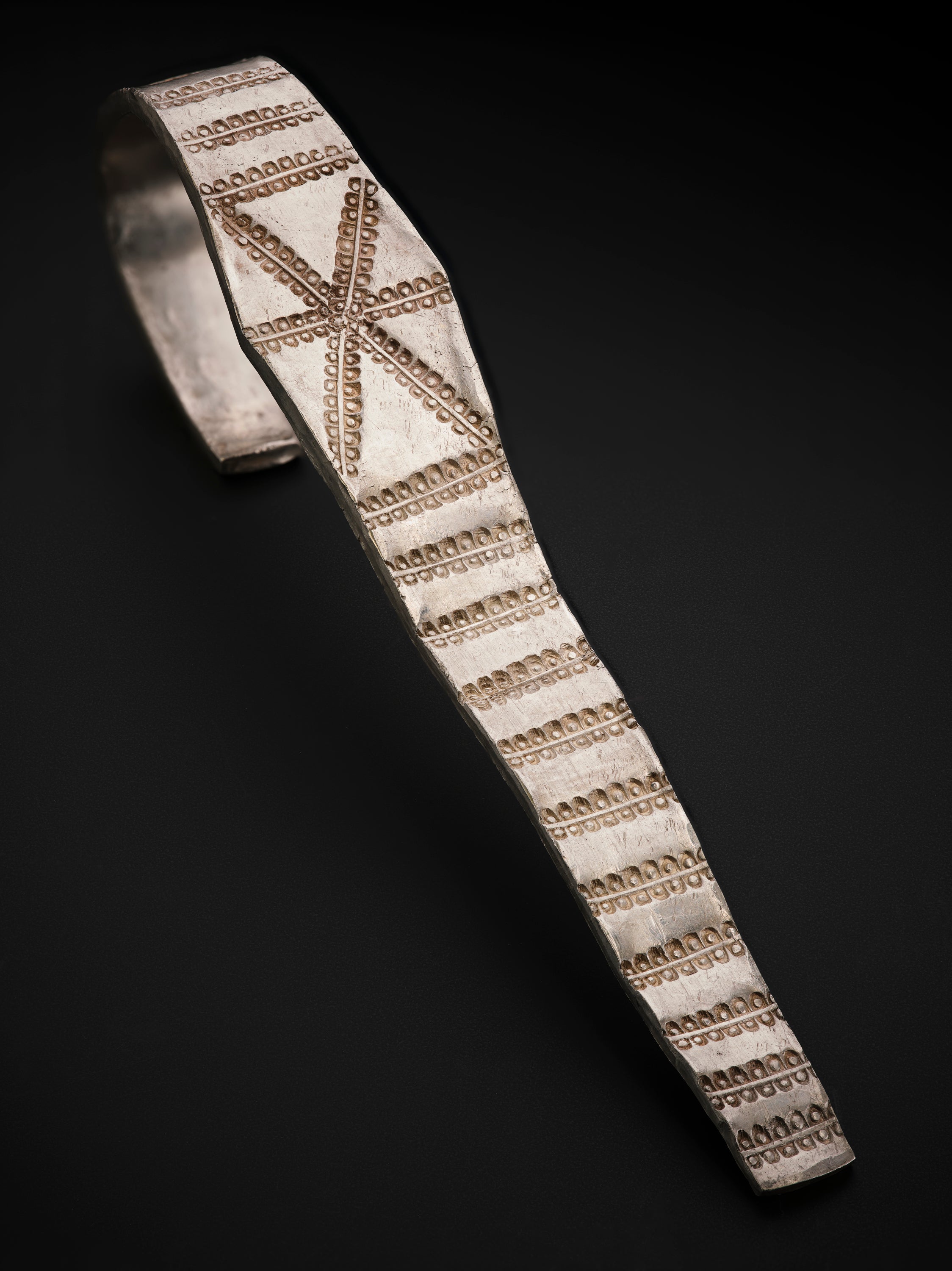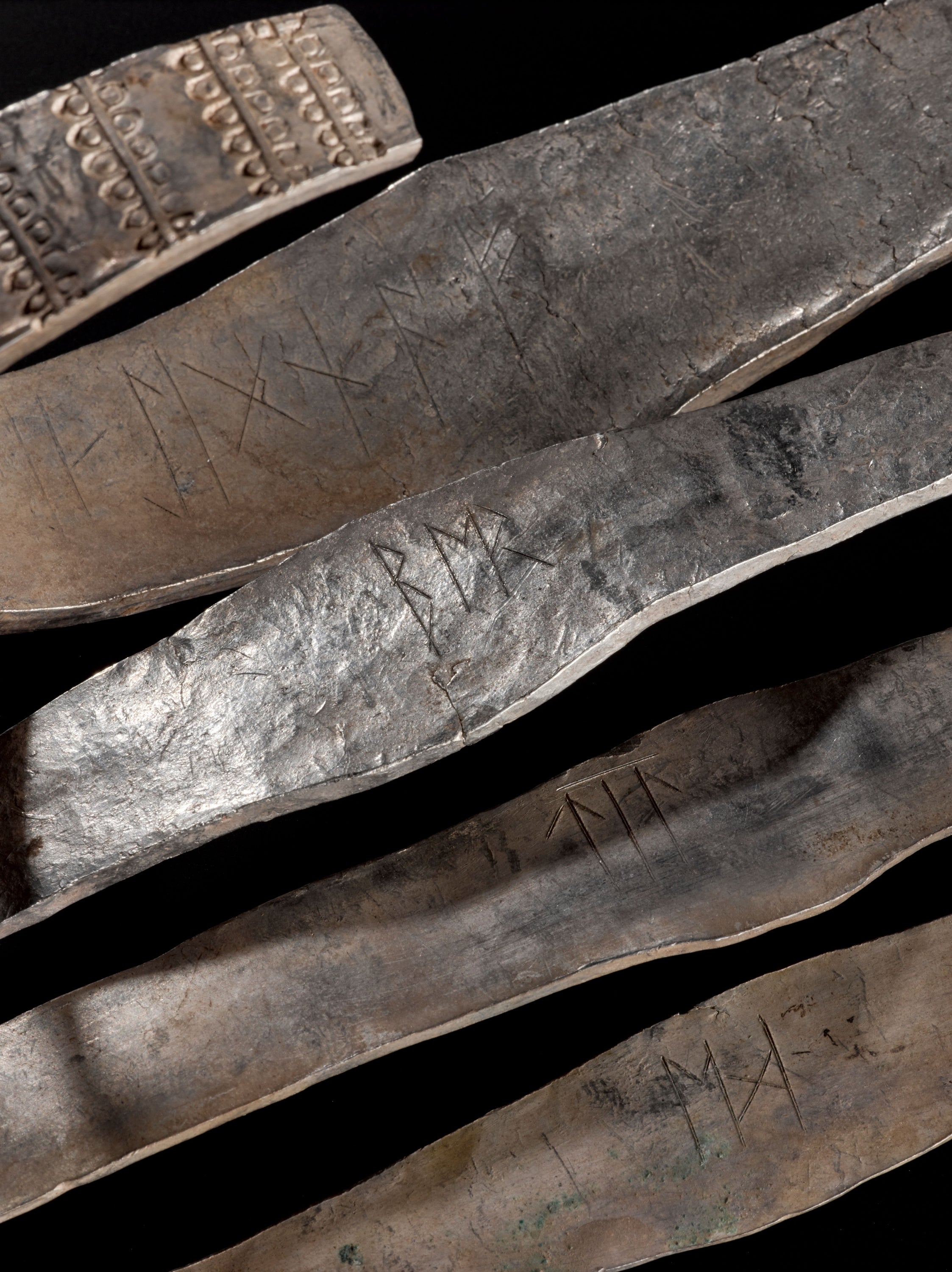Archaeologists have found “compelling” new evidence as to who might have owned a Viking Age hoard of more than 5kg of gold, silver and other treasures.
A newly translated runic inscription has shed light on the Galloway Hoard, considered to be one of the richest collections of Viking-age objects ever found in Britain and Ireland when it was uncovered by a a metal detectorist in Balmaghie, near Kirkcudbright, in 2014.
Researchers at National Museums Scotland, which have been studying the hoard, proposed a new translation which suggests the treasure belonged to everybody. A runic inscription on one of its silver “ribbon” arms has been deciphered to reveal it reads: “This is the community’s wealth/property.”
Martin Goldberg from the museum said: “This is another really interesting and significant development in our understanding of the Galloway Hoard. The idea that the wealth this hoard represents would be communally held is fascinating.
“It does still leave us with unanswered questions around the circumstances in which a community’s wealth would come to be buried, and also which particular community.
“Some material within the hoard, such as the pectoral cross and the rock crystal jar made for a Bishop Hyguald, would support this being a religious community.”

Previous theories suggested it was buried by four owners based on the four arm rings inscribed with Anglo-Saxon runes.
Three of the inscriptions feature Old English name elements, but the fourth and longest inscription has remained indecipherable as there is no recognisable direct translation.
Researchers had long struggled to make sense of the runic inscription carved inside the curved half of the arm ring, which read “DIS IS IIGNA F”.
They made a breakthrough when they realised that it may well be “technically ‘wrong’”. They explained the word “IIGNAF” was the main problem as it didn’t correspond to any language spoken in early medieval Britain or Ireland.
When they discovered the final rune, F, was marked with punts or dots, either side, they understood the name of the rune itself – “feoh”, meaning wealth or property, unlocked a new translation.
The inscription “IIGNA” could be interpreted as the Old English word “higna”, which had been used elsewhere in Anglo-Saxon documents to allude to a religious community, with the first letter spelt in an unusual, but understandable way.

The word “DIS” also seemed to be misspelled, but interpreted it to mean “this” with the “Th” sound being pronounced with a “D”.
Despite these mistakes, the researchers believe the full translation reads: “This is the community’s wealth/property.”
Runologist Dr David Parsons, from the University of Wales, said it was a “difficult and unusual inscription”, calling the proposed translation “challenging”.
The runologist, who had previously translated other inscriptions from the hoard, added: “There are a number of things which are technically ‘wrong’ when we compare it with what we know about ‘correct’ runic writing.
“However, if we think about both spoken and written English today, there are a huge range of regional and idiomatic variations and, if we allow for this, then it becomes possible to accept this as a plausible reading.
“And in the context of what [we] can deduce about the Galloway Hoard. it becomes really quite compelling.”
This finding concludes a three-year research project called Unwrapping the Galloway Hoard, supported initially by the UKRI Arts and Humanities Research Council.
Chairperson Christopher Smith said: “It has been fascinating to see the succession of significant discoveries over the life of the Unwrapping the Galloway Hoard project, from the exotic origins of some of its star pieces to the presence of named individuals and now this latest exciting discovery.”
The arm ring will next be displayed at the South Australian Museum in Adelaide as the hoard goes on an international touring exhibition titled Treasures of The Viking Age: The Galloway Hoard, which opens on Saturday.




